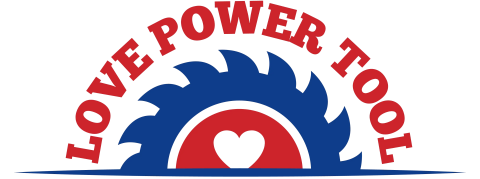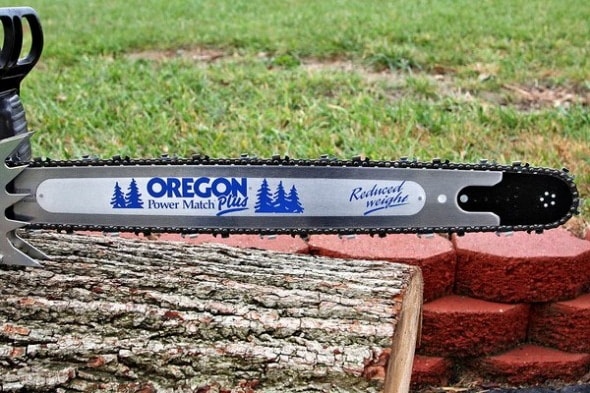A chainsaw bar bears a lot of heat and friction as there’s always a chain spinning around it. So, after a period of use, it will eventually wear out and not function properly anymore.
It is apparent that a worn-out chainsaw bar exposes users to potential risks, which is the reason why you should be aware of its condition to consider a replacement in the nick of time.
So, when should you replace your chainsaw bar? Keep scrolling to get the best tips and advice.
When Should You Replace Your Chainsaw Bar?
Typically, there are four signs of a worn-out chainsaw bar: damaged bar, damaged blade, twisted chain, and jammed sprocket. If you notice these signs, consider getting a new chainsaw bar right away.
The problems can come from anywhere: the bar, the chain, or the blade.
Fortunately, most of the damages are visible and can be seen quickly by naked eyes, and you can conduct some simple tests to spot them.
The following paragraphs will give you some essential information about what you need.
4 Signs Of A Worn Chainsaw Bar
The bar has been bent or damaged
A chainsaw bar may survive up to 10 years on average if it is not damaged or bent. However, once it’s broken, it won’t stay long.
Although chainsaw bars are strong and do not bend/ damage readily, there is always the possibility that one will bend or wear out under specific conditions or considerable weight.
This is the most visible symptom of a worn-out bar and the first step in determining whether or not you need a new one.
Remove the bar and the chain swell to do a thorough visual check of your chainsaw bar. Look for any minor bends, cuts, or fractures along the rails of your chainsaw bar, especially the center of the bar.
Damaged/bent bars not only limit your chainsaw’s efficiency and cutting power, but they can also be unsafe to operate. If you detect any fractures in the chainsaw bar, it’s time to replace them immediately.
Read more: Chainsaw Safety Tips
Aside from that, if the bar has any sharp edges, file them down, so the chain doesn’t get stuck in them when the chainsaw is running.
The chain wiggles side to side, or there are pinched spots over the rails
This is not about a loose chain, but we’re searching for the left to right movement of the chain even when the chain is correctly tightened.
It will be challenging to achieve a clean cut if your chain is wriggling between the grooves of the bar since it will not be able to stay in place no matter how sharp or fresh the chain is.
Besides, look down to the rails to see if any part on the bar is narrower than the rest. This area, also known as a pinched rail, reduces the space available for the chain to move smoothly.
And, as a result, the bars are subjected to chain friction, which creates a hot area over there.
Yet, good news for you is that pinched rails are repairable. Use a flat-blade screwdriver and align the rails to their regular thickness; you can open up the pinch and fix it.
The sprocket has been jammed
If you have a chainsaw bar with a sprocket tip, you should know that the tip is generally the first element to be worn.
The nose sprocket is a gear at the front of the chainsaw bar that permits the chain to travel between its teeth in a fixed position.
The bar’s nose sprocket receives oil from the bar oil reservoir positioned near the chainsaw’s motor.
If the nose sprocket is not adequately lubricated, it might become seized due to increased friction, causing the chain to break or not run at all. The heavyweight of the trees can also be a reason causing a damaged sprocket.
The blades’ edges are blunt or tilted
An indicator of worn-out grooves on a chainsaw bar is when the blades of the chain are slanted at an angle rather than pointing straight up.
This might also indicate that the grooves on the bars are worn on one or both sides, and the chain is tilting, forcing the blades to tilt as well.
If there is a gap between the ruler and the bar when pressed against the side of the chain, but the ruler lays flat, which means there is too much space between the bar’s rails and the chain, and the blades are leaning to one side.
This will result in uneven cuts or no cutting power. That’s when you should purchase a new one and replace the bar.
Simple Tests To Recognize The Damage
First of all, check to determine if the bar is crooked. To do so, bring the bar up to the light and inspect it like you would a piece of wood.
If the chainsaw bar seems to be crooked, it is a clear indicator that the chainsaw bar has to be changed.
Next, take a look at the sprocket. If this does not spin freely or is stuck, it is likely that the chainsaw has overheated from repeated cuts or that the bars have been squeezed when felling trees.
Ensure you have adequate oil before replacing your chainsaw bar, as this is one of the reasons the sprocket will stop operating.
Finally, if your chainsaw bar has chunks or dinks on it, this means that it needs to be replaced as soon as possible.
For more information, refer to this video:
Final Thoughts
A chainsaw would be worthless if it didn’t have a chainsaw bar. Above are the signs of “when should you replace your chainsaw bar?” and all the necessary techniques to recognize them.
Hopefully, this article will help you with your problems. Don’t forget to check your chainsaw often so as not to hamper your work progress. Good luck!
Read more: Chainsaw Tips for Beginners?


